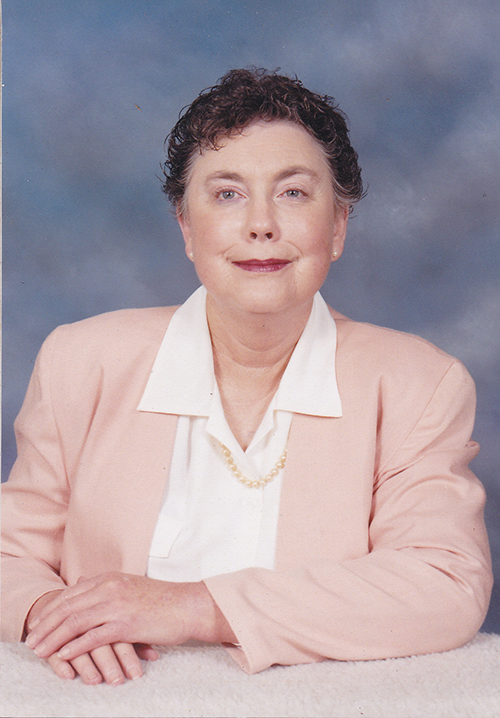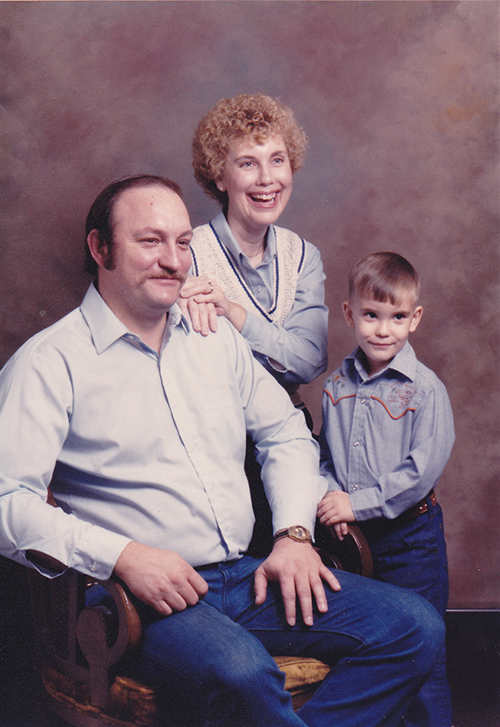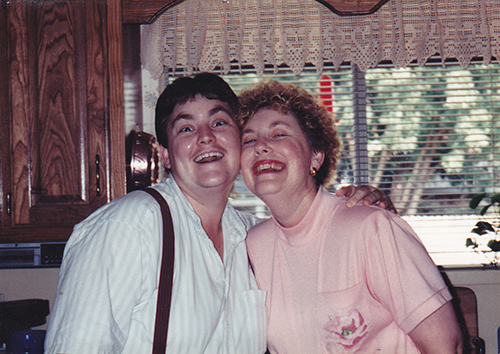|
Taking Control: Joy Bobo Joy Bobo, 69, of Arlington, Texas, was diagnosed with systemic scleroderma in 2001. This is the story of her scleroderma journey, told in her own words.
I would like to share my story with “You” in hopes that you will understand that you always have control over your life, and that when you have scleroderma, you must face important choices that may alter your life. In the beginning, my internist sent me to a dermatologist who put me on a cortisone derivative, not once, but twice. When it didn’t work, I was told not to come back. “Eczema is what you have,” shouted the doctor at me. I never went back. I went to another internist, recommended by a friend, who used a fine microscopic lens to study my arms and hands more closely. He told me I had scabies. Leaving the office in total embarrassment, I took the recommended treatment twice. My body burned and the blisters burst. The rash continued.
I asked for a referral to the University of Texas Southwestern School of Medicine to see a dermatologist who, without hesitation, told me I had scleroderma. A punch biopsy confirmed the diagnosis. Five long, agonizing months had passed. As I eventually learned, this was a shorter journey than most. A rheumatologist was called. He suggested I consider the possibility that I might have internal organ involvement. This suggestion had merit because I had recently experienced several respiratory infections, including pneumonia with bronchial asthma. The doctor contended that my respiratory history could have a strong bearing on my course of treatment. Because of the rare and potentially fatal illness, he recommended I consider visiting a research facility for a consultation. The painful reality of what I was facing all of a sudden struck me as I realized that I had important choices that could adversely change my life. I didn’t know whether the disease was contained within the skin alone or had internalized, targeting my major life-giving organs. What I did know was that I had to begin taking responsibility for my care. I reminded myself that this is my body and my life. I have it all when it comes to organ involvement: my lungs, heart, gastrointestinal tract, kidneys and skin! To say this is to fully realize the importance of getting help, learning how to help myself and surviving! As I began to learn about scleroderma, I felt the shock of the diagnosis. There is no known cause or cure. Scleroderma is extremely rare and potentially fatal. The treatment is based solely on the symptoms. Once fully aware of what life held for me, I knew that the key to treatment would lie in finding out whether my internal organs were involved. I didn’t have time to feel sorry for myself. I knew that I wanted a specialist who completely understood the disease, one who is on the lookout for results and would be able to guide me through the maze. I decided that I wanted a doctor who does research because he would continually be looking for answers. I wanted a lot from my doctor because I care about what happens to my body. Suddenly, I knew I wanted to live! This search led me to a research facility in Seattle, Wash. Once in Seattle, I had tests to evaluate my lung capacity and to determine if I had pulmonary hypertension. When testing concluded, my doctor told me that I had interstitial lung disease and pulmonary hypertension. I wasn’t surprised but I was also locked into a lifetime of chronic disease, one that I knew would require dedication on my part to survive. I went home to Texas to establish a relationship with a lung doctor. There, I was placed on an oral chemotherapy drug. Over the course of the next few years, my internal organs, one by one, began to show evidence of involvement. With each symptom, I sought help from various specialty doctors. When my blood pressure escalated, I saw a kidney doctor. When my heart began to beat rapidly, I saw a heart doctor. When I noticed that my food wanted to come back up as much as three to four hours after eating at night, a stomach doctor told me that I had esophageal reflux disease. I’m known to say, “I have it all when it comes to organ involvement.”
To maintain a positive frame of mind, I gathered my support system around me through family and friends. “There is always a positive side to everything,” my father would say to me. Friends gave me hugs and sent meaningful cards filling me with the hope that I had the potential to get better. In the beginning, I worked at feeling that it was the best thing for me despite the shortness of breath and overwhelming fatigue. My faith was reinforced for spiritual guidance. I looked for self-help books at the library to read during sleepless nights. I won’t pretend that it was a smooth course or that the emotions were not overpowering. Coming home at night, my little dog would greet me with her fluffy tail wagging and her loving, chocolate-colored eyes looking at me with total affection. She was my best friend during the dark, sleepless nights when the itching kept me awake. She was a true expression of love during those low moments of my life. At night, she would gradually work her way from the end of the bed to the top so that when I opened my eyes in the morning, I was greeted with her soft fur on my pillow as she crawled to my side, comforting me in the process. She knew I was sick. I will never forget her. I would like to tell you that being positive, aggressive and knowledgeable contained my illness to the present stable condition I face today. I know that this approach probably helped contribute to saving my life. However, doing the right thing at the right time doesn’t always work. When I retired, my advisor left me with two wonderful words of wisdom: faith and hope. These important key words continue to provide a beacon of light and guide me through the highs and lows of my ongoing illness. I constantly remind myself how blessed I am to be able to tell my story. |
|
|
||
Back
Understanding Scleroderma
Back
Treating Scleroderma
Back
Living Well with Scleroderma
Back
Advancing Research and Treatment
Back
Get Involved



 All of a sudden, I was facing a crisis! I had a strange rash
on my arms, hands, fingers, chest wall and face. The rash itched, my skin began
to harden, and my hands turned abnormal colors varying from pink to blue. Sleep
was difficult because the rash was more obvious at night and the desire to
scratch was more intense. I tried various over-the-counter medications without
success. As time passed, my wrists began to swell, and my hands had enlarged,
weakening my grip.
All of a sudden, I was facing a crisis! I had a strange rash
on my arms, hands, fingers, chest wall and face. The rash itched, my skin began
to harden, and my hands turned abnormal colors varying from pink to blue. Sleep
was difficult because the rash was more obvious at night and the desire to
scratch was more intense. I tried various over-the-counter medications without
success. As time passed, my wrists began to swell, and my hands had enlarged,
weakening my grip.
